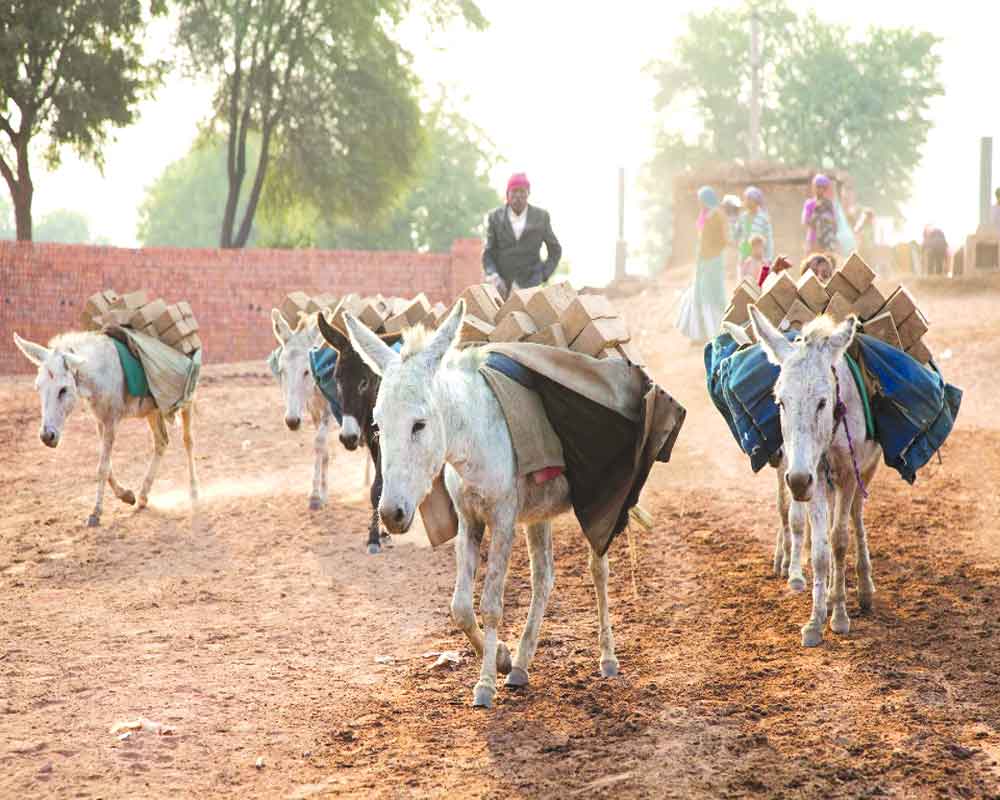Population of donkeys has fallen by 61% since 2012
In the last seven years, India has lost more than half of its donkeys. The population of donkeys has fallen by a massive 61 per cent since 2012, as per the livestock census report 2019. The total number of donkeys in India now stands at just 1,20,000 down from 3,20,000 seven years ago.
The decline in the four-legged animal population is uniform with almost all the States witnessing a decrease in their numbers. Alarmingly, donkey population is on the verge of extinction in Leh and Ladakh as their number has drastically decreased and is less than hundred there.
Rajasthan tops the list of States with most donkeys, followed by Maharashtra, Uttar Pradesh, Gujarat and Bihar.
Taking note of their declining numbers, the Ministry of Fisheries, Animal Husbandry and Dairying has asked the Indian Council of Agricultural Research (ICAR) to explore possibilities of promoting donkey milk in the country that can lead to their conservation. Donkey milk has four times the vitamin C as cow’s milk, and contains casein, lactose, vitamins A, B1, B2, B6, D, and E besides being used for beauty products.
As per the donkeys’ census, the population of donkeys has fallen to 23,000 from 81,000 in Rajasthan. The maximum donkey population is in Barmer district followed by Jaisalmer, Bikaner, Churu and least in Tonk district.
Maharashtra has only 18,000 donkeys as compared to 29,000 in the previous census. The State Animal Husbandry Department has already launched a “Save Donkey” programme in the lines of “Save Tiger” to protect donkeys.
The population of donkeys in UP has declined majorly from 57,000 to 16,000, while both Gujarat and Bihar have 11,000 donkeys. In 2012, there were 39,000 donkeys in Gujarat and 21,000 in Bihar.
The donkeys’ population also declined from 17,000 t0 10,000 in Jammu and Kashmir. Assam has 13000 while Haryana now has 10,000 donkeys.
According to Agriculture Ministry’s officials, the decline in population might be due to their decreased working utility, as alternate economical sources of mechanization are available. Besides, the wildlife mafia who used to supply tiger skin and parts, have now switched over to donkeys, which are in much demand in China for its medicinal use. Some cases of donkey killings have been reported in Madhya Pradesh and Maharashtra.
Donkeys are normally used for transportation of agricultural goods, building materials and people all over the world. “Majority of the donkey population is owned by socially and economically deprived landless people and these animals serve as the source of livelihood for their masters and play an important role in their socio-economic status also,” officials added.
In Rajasthan, 70 percent of donkeys were of grey colour and remaining animals were of white colour. In Gujarat, both white and grey coloured donkeys were available. In another cold desert (Leh), donkeys were dark coloured, mainly dark grey (42 percent), brown (42 percent) and black (16 percent) in colour. In Haryana, most (90%) of the donkeys were grey coat coloured while in Bihar, grey coat colour (54.17 percent) was prominent, followed by white grey (36.11 percent) and brown (5.56 percent).
As per the census, the population of camels, pigs, horses, ponies and mules have also sharply declined by 51.9 percent. The number of pigs also registered a decline. There were 11.1 million swine in 2007, which decreased to 10.2 million in 2012. In 2018, there were 9 million swine. Horse and ponies also sharply declined by more than 45 per cent. The number was 612,000 in 2007, which increased to 625,000 in 2012, and then sharply decreased to 340,000.
India’s livestock population increased to 535.78 million, with the number of cows rising 18 per cent to 145.12 million as compared to 2012, according to latest census. However, the livestock population witnessed a decline of 1.35 per cent in Uttar Pradesh, Rajasthan (1.66 per cent) and Gujarat (0.95 per cent). The 20th Livestock Census was conducted with the participation of all States and Union Territories. It covered about 6.6 lakhs villages, 89,000 urban wards and involved more than 27 crore households and non-households.


























